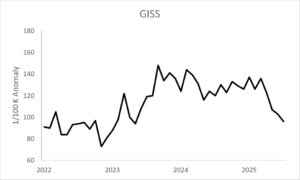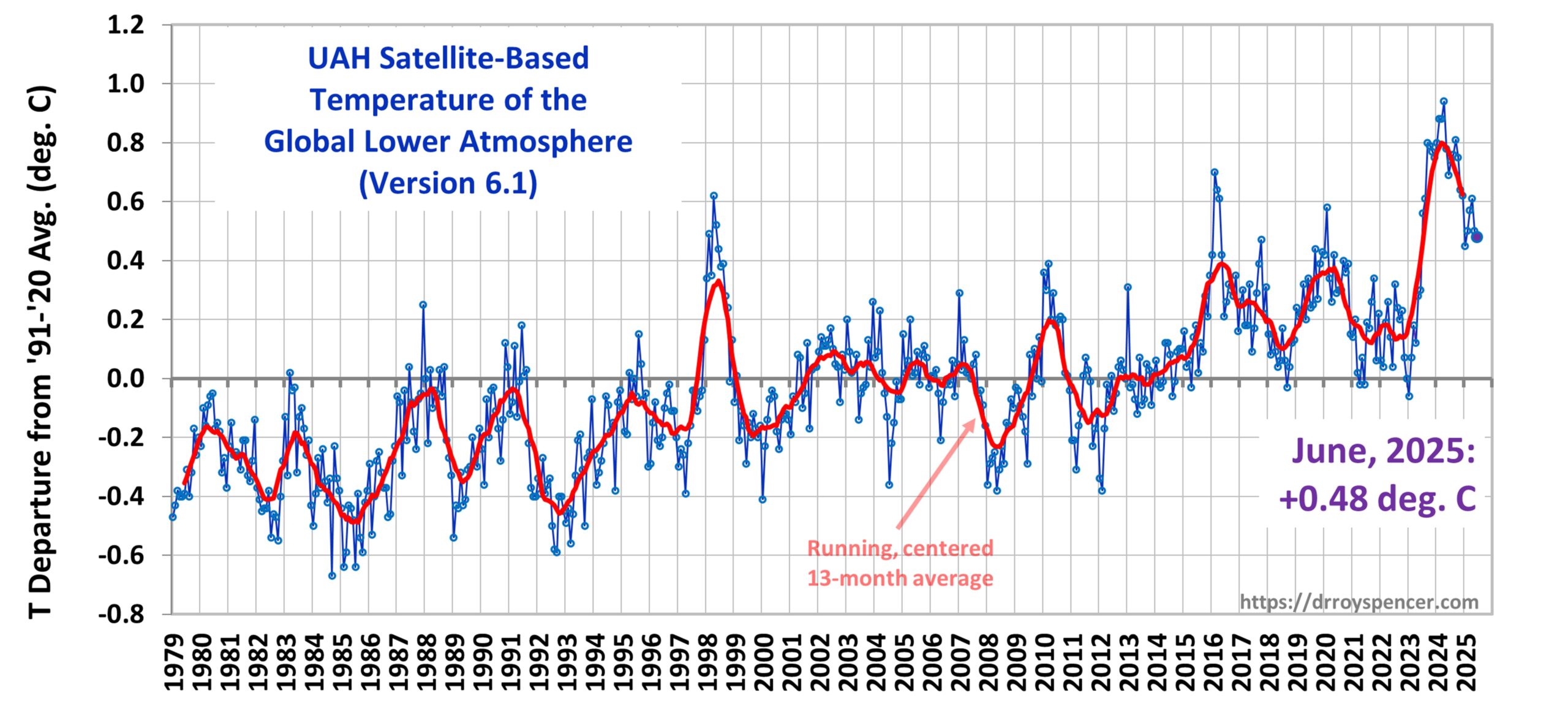by F. Menton, Aug 4, 2025 in ClimateChangeDispatch
On July 29 — the same day that EPA initiated the process of revoking the absurd “endangerment finding” that demonizes CO2 emissions from energy production (covered at Manhattan Contrarian here) — there was another equally momentous development on the energy front at the federal government. [emphasis, links added]
On that day, the Department of Energy released a lengthy Report with the title “A Critical Review of Impacts of Greenhouse Gas Emissions on the U.S. Climate.” (Although the Report bears a date of July 23, the 29th appears to be the date when it was signed by Energy Secretary Chris Wright and officially released.)
The Report is attributed to something called the “Climate Working Group,” consisting of five prominent members of the climate skeptic community: John Christy, Judith Curry, Steven Koonin, Ross McKitrick, and Roy Spencer. Full disclosure: I know four of the five (Judith Curry is the exception), and consider two of them friends.
These are all highly competent and accomplished people, which is a dramatic contrast to the lightweights and grifters who constitute essentially all of the “mainstream” climate science community.
Most important about these five is that they are all willing to acknowledge the limitations of the knowledge possessed by the scientific community about the world’s climate.
The Report overall comes off as a fair and balanced assessment of risks and trade-offs, rather than what normally comes from climate academics and journalists, which are cheap attempts to use speculation and fake projections to scare you out of your wits.
…









